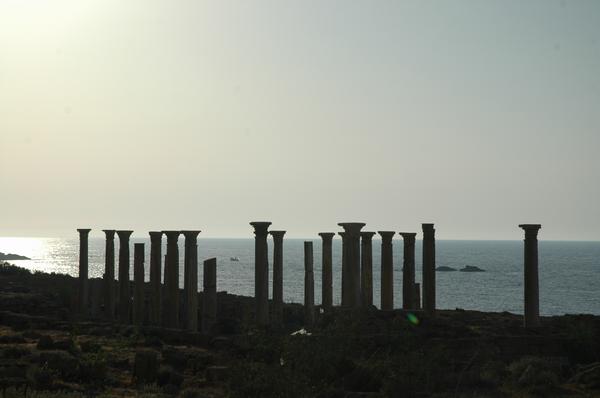Apollonia
Q45826
Apollonia was founded towards the end of the seventh century BCE as the port of Cyrene, the great Greek metropolis in the northeast of the country that is now called Libya. Because Apollonia was dependent on the older city, it was not a very important town, and shared in Cyrene's fate. So, it was part of the Persian or Achaemenid Empire after 513 BCE.

After Alexander the Great had conquered the Persians (331), Apollonia and Cyrene were part of the Ptolemaic Empire, which was founded by one of Alexander's generals, Ptolemy I Soter. The cities retained much of their autonomy, because they were in the periphery. Among the monuments from this age are the walls and the Greek theater. In the first century BCE, the Cyrenaica was integrated in the Roman Empire - as a municipality that was independent from Cyrene, its former master.

From this age, several monuments survive, like the stage wall in the theater and the bathhouse (built during the reign of the emperor Hadrian), and many port facilities.
In c.300, Apollonia was made capital of a newly created province, Libya rSuperior, by the emperor Diocletian (.284-305). It was renamed Sosouza ("savioress"), probably after a goddess who was venerated here (Isis?). The military leader of the region, the dux, built his palace in the city, and rebuilt the original wall from the third century BCE.

In the fourth century, the city suffered from a natural disaster, probably the tsunami of 365, but it survived, although many ancient buildings had been shattered. Nevertheless, Apollonia became more important than it had ever been, because in the fifth century, the interior was abandoned to the Libyan Laguatan nomads (Synesius of Cyrene describes these disastrous years in his Catastasis). The port remained one of the last bases of the Byzantine troops and there were several new building projects, like the eastern, central, and western basilicas.
The town, refortified during the Ananeosis ("renewal") but in the end conquered by the Arabs, was abandoned in the Middle Ages, but resettled in 1897 with Muslim refugees from Crete, who called it Susa (from Sosouza).